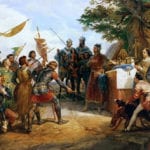 Food
Food  Food
Food  History
History 10 Odd Things Colonial Americans Kept at Home
 Weird Stuff
Weird Stuff 10 Superstitious Beliefs That Once Consumed Entire Cultures
 History
History 10 Bizarre Friendly Fire Incidents in Military History
 Technology
Technology 10 Modern Technologies That Accidentally Imitate Ancient Magic
 Mysteries
Mysteries 10 Mysteries of the Human Genome
 Weird Stuff
Weird Stuff 10 Things So Rare They’ve Only Been Found Once
 History
History 10 Legends Whose Last Moments Undid Their Glory
 Health
Health 10 Futuristic Ideas to Treat Common Medical Problems
 Weird Stuff
Weird Stuff Ten Surreal Attempts to Reverse Baldness
 Food
Food 10 Everyday Foods You Didn’t Know Were Invented by the U.S. Military
 History
History 10 Odd Things Colonial Americans Kept at Home
 Weird Stuff
Weird Stuff 10 Superstitious Beliefs That Once Consumed Entire Cultures
Who's Behind Listverse?

Jamie Frater
Head Editor
Jamie founded Listverse due to an insatiable desire to share fascinating, obscure, and bizarre facts. He has been a guest speaker on numerous national radio and television stations and is a five time published author.
More About Us History
History 10 Bizarre Friendly Fire Incidents in Military History
 Technology
Technology 10 Modern Technologies That Accidentally Imitate Ancient Magic
 Mysteries
Mysteries 10 Mysteries of the Human Genome
 Weird Stuff
Weird Stuff 10 Things So Rare They’ve Only Been Found Once
 History
History 10 Legends Whose Last Moments Undid Their Glory
 Health
Health 10 Futuristic Ideas to Treat Common Medical Problems
 Weird Stuff
Weird Stuff Ten Surreal Attempts to Reverse Baldness
Top 10 Pyrrhic Victories
A Pyrrhic victory occurs when a battle or a war is won, but the cost of casualties or the following events greatly outweigh any benefits from winning the conflict. It’s a victory that just isn’t worth it.
10 Battle Of Bunker Hill

In the early stages of the American Revolutionary War, the Battle of Bunker Hill was fought as an offshoot of the Siege of Boston. The Americans learned of the British plan to occupy the high ground (which would allow them to control Boston Harbor), so the Americans fortified the hills themselves in preparation.
When British Major General William Howe realized this, he ordered his ships to launch a bombardment against the position, but they made little progress. Then Howe decided to storm the uphill position head-on, taking heavy casualties as his troops charged into the line of American fire.
These deadly results happened because the Americans waited to fire until they could “see the whites of their eyes.” The British retreated to a safer position at the base of the hill. But Howe decided to charge the position again in the same way with the same catastrophic results.
By the time of the third assault, the Americans had run out of ammunition and retreated from the their position under fire. The British victory came at a high casualty cost, with around 1,000 dead or wounded. The Americans had significantly fewer casualties.
This gave the Americans a huge morale boost because it proved that their supposedly weaker army could stand up to the professional British army. British General William Clinton said of the battle, “A few more such victories would have shortly put an end to British dominion in America.”
9 Battle Of The Alamo

The Battle of the Alamo took place during the Texan revolt, in which the state of Texas declared independence from the Mexicans due to the increasing centralization of their government.
Initially, the Texans had success, beating Mexican soldiers who were stationed in the state, although the Texans were only conscripted, raw recruits. They established a fort and left a group of soldiers at the Alamo Mission, a former Spanish missionary base.
The Mexican army put the fort under siege. Once ready, they launched assaults until eventually breaking through the defenses of the brave Texans inside. The Mexicans spared a few people so that word of the defeat and the might of the Mexican army would spread to the rest of the enemy.
This was a Pyrrhic victory for the Mexicans because it inspired men to flock to the Texan banner. This allowed the Texans to beat the Mexicans at the Battle of San Jacinto. There, Texan soldiers could be heard shouting the infamous phrase, “Remember the Alamo.”
Mexico’s refusal to acknowledge Texas and small-scale fighting caused continuing friction until Texas joined the United States of America a decade later. Then the conflict erupted into the Mexican-American war, in which Mexico lost large chunks of land to the USA.
8 Battle Of Malplaquet
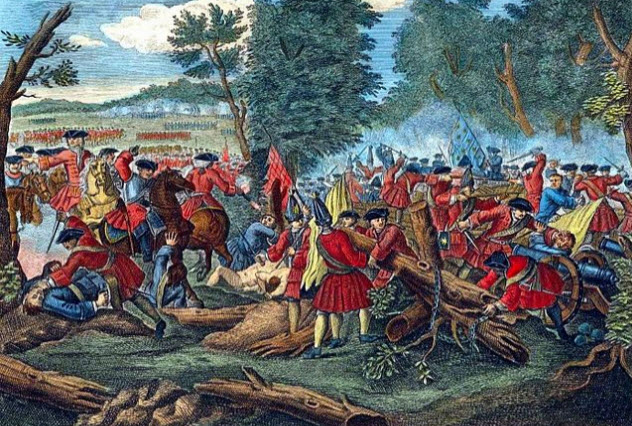
During the War of the Spanish Succession, the Battle of Malplaquet, which took place in northeastern France, turned out to be a key battle in the war.
The Duke of Marlborough led the Grand Alliance, which was made up of about 100,000 soldiers from Great Britain, the Holy Roman Empire (led by Austria), Prussia, and the United Provinces (modern-day Netherlands). On the other side, General Claude de Villars led approximately 90,000 men, consisting of the French army and a small contingent of Bavarian troops who supported them.
The action began with the Grand Alliance laying siege to the fortress at Mons. In response, the French army arrived at Malplaquet and began operations to break the siege. To prevent the French from gaining the upper hand, the Duke of Marlborough used an attack strategy that weakened the center of the French army. This allowed a huge cavalry charge to break the army down the middle.
The duke was successful but at a huge cost. The Allies suffered over 20,000 casualties, while the French endured about 12,000. As the French retreated in good order, they counterattacked with their cavalry and stopped the Allies from routing them.
7 Battle Of Lutzen
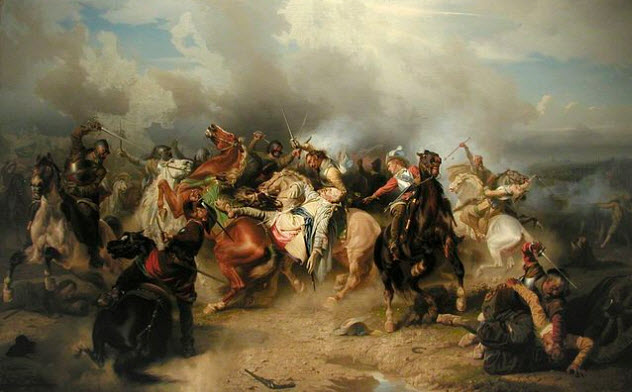
The Battle of Lutzen was a decisive battle in the Thirty Years’ War, in which Protestants and Catholics in the Holy Roman Empire fought for their beliefs. Sweden was under the command of one of the greatest generals of the age, Gustavus Adolphus.
Adolphus had revolutionized the Swedish army, which affected how wars were fought from then on. He incorporated combined arms into his army and was always looking for the best technology with which to gain the upper hand. Adolphus put his soldiers through rigorous training that made the Swedes one of the great powers of the age.
The battle was a huge success for Sweden. They fought well and achieved victories against a coalition of Catholic Holy Roman Empire states. During the battle, Adolphus led a cavalry charge into the enemy.
However, a combination of smoke from the battle and fog made traversing the battlefield perilous. With his cavalry separated by the conditions, Adolphus was shot several times by the enemy and fell on the battlefield. A hugely successful battle was forever tainted by the loss of a military colossus for Sweden.
6 Second Boer War
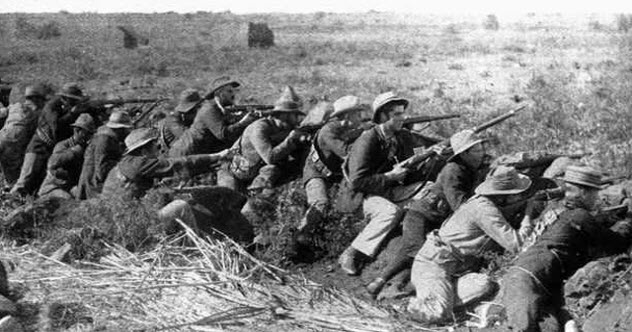
The Second Boer War in South Africa was a conflict between the British Empire and the Boers of the Transvaal Republic (South African Republic), who were joined by the Orange Free State. Tensions had long been strained between these parties, and conflict was not uncommon. After large deposits of gold were found in these states, the British took interest, which made the residents of the Boer states uneasy.
Large numbers of British immigrants in South Africa had the expertise to develop the gold. This quickly became an issue because immigrants would soon outnumber native Boers in the states. However, the immigrants weren’t given full rights.
At first, the British attempted political maneuvers to gain full rights for the immigrants, a larger stake in the gold industry, and control over the Transvaal Republic and the Orange Free State. As tensions rose, Britain stationed soldiers on their border with the states. In response, the Transvaal Republic issued an ultimatum to Britain to clear the borders within 48 hours or face war with the Transvaal Republic and the Orange Free State.
Soon afterward, war was declared. The British-led forces eventually won this bloody conflict, and both states were annexed into the empire. For the British, the Pyrrhic aspect of this victory was twofold. Over 50,000 men died or were injured, and the war instilled a deep sense of nationalism in people from the Transvaal Republic, the Orange Free State, and the British colonies in the area.
The idea of Afrikaner nationalism became entrenched in these native peoples, which caused many problems for the British. Within a decade, all British possessions in the area were merged into the Union of South Africa, which later became the modern-day Republic of South Africa.
5 Battle Of Chancellorsville
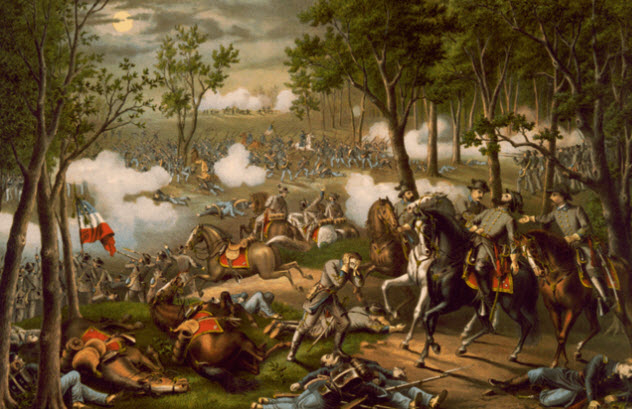
During the American Civil War, the Battle of Chancellorsville took place in Virginia. Led by Joseph Hooker, the Union had an army of around 130,000 men. They faced a Confederate enemy, led by Robert E. Lee, with only about 60,000 men. Later described as his “perfect battle,” Lee used a risky, Napoleon-style maneuver that split his army when it faced overwhelming enemy forces.
Encouraged by his aggressive counterpart Thomas “Stonewall” Jackson, Lee decided to attack rather than assume a defensive position where the larger Union Army could easily outmaneuver him. The approach worked fantastically well. Lee won the battle.
However, his army suffered huge casualties of about 13,000 men. The Union had 17,000 casualties. At first glance, that may seem worse, but the Union had a larger army and a bigger pool of manpower from which to replenish their troops. The Confederate Army had considerably fewer replacements at their disposal, and their losses added up to about 22 percent of their army.
The biggest loss, however, was that of Stonewall Jackson. He died from pneumonia that set in from the amputation of his left arm. Lee said to tell Jackson on his deathbed: “My affectionate regards, and say to him, ‘He has lost his left arm, but I my right arm.’ ”
Once Lee heard of Jackson’s death, he said to his cook, “William, I have lost my right arm [and] I’m bleeding at the heart.”
4 Pearl Harbor
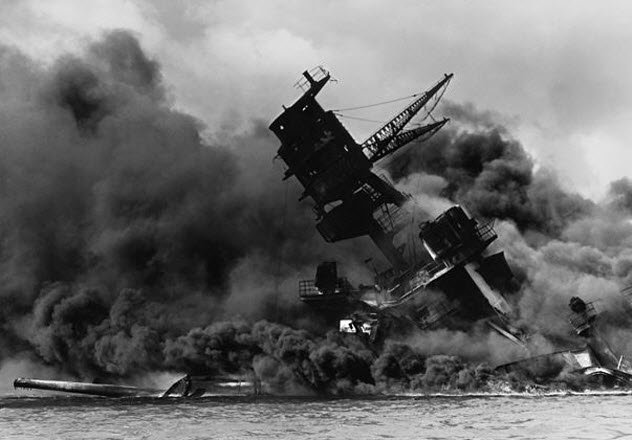
The shock attack by the Japanese on Pearl Harbor triggered the USA’s entry into World War II. The Pearl Harbor attack was later classified as a war crime because the Japanese attacked without formally declaring war on the Americans first.
The aim of Pearl Harbor was to cripple the American Pacific fleet before the US joined the war, as the Japanese believed they would at some point. If they disabled the US fleet, the Japanese believed they could attack Allied possessions in the Pacific without interference.
The big problem for Japan was that this act quickly changed the attitude of the American people from nonintervention to pro-war. The US joined the war and began operations against the Japanese.
American air raids, which were mostly comprised of firebombing, caused devastation to Japan. During the war, 67 Japanese cities were firebombed. Tokyo suffered up to 200,000 civilian deaths from firebombing alone.
Obviously, the most devastating repercussion for Japan occurred when America dropped nuclear bombs and crushed Japan into submission. The Pearl Harbor attack ultimately led to Japan’s loss of the war.
3 Pyrrhic Wars
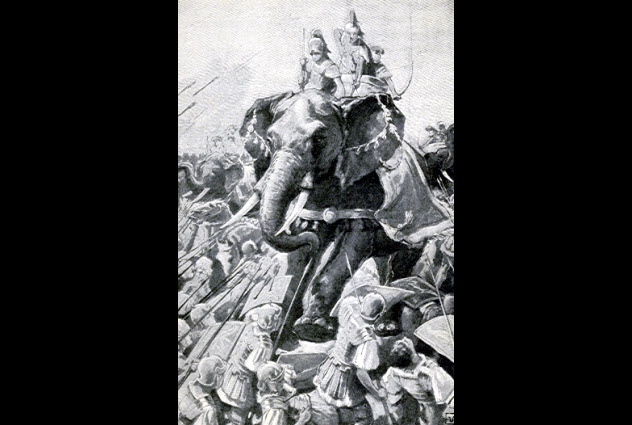
During the Pyrrhic wars, the Romans fought against Epirus, a former state in northern Greece. Epirus was led by a fantastic general called Pyrrhus, who was distantly related on his mother’s side to Alexander the Great.
The reason for the war was a minor treaty violation by the Romans with the city of Tarentum, which called in a favor from Pyrrhus. He allied himself with Magna Graecia, Samnium, and Syracuse against Rome and Carthage. Pyrrhus’s plan was to beat the Romans in the field and attempt to convince the Italian people under Roman rule to revolt and join him.
Pyrrhic victories are named after Pyrrhus because of this campaign in Italy. Despite his many victories—and huge losses for Romans—the Romans just kept coming. Their manpower reserves allowed them to replenish their armies. In addition, the influence of the Romans over the rest of Italy stopped Pyrrhus from gaining a crushing defeat or swaying people under Roman rule to join him in the fight.
The Battle of Asculum was particularly damaging for Pyrrhus. He crushed the Romans, who suffered 8,000 casualties compared to his 3,000. But Pyrrhus lost many officers and staff in the fighting. He would later say, “One more such victory, and we are undone.”
2 Battle Of Borodino
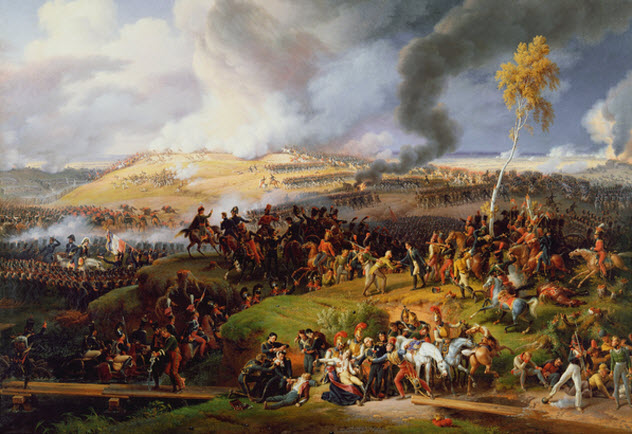
By 1812, Napoleon had achieved incredible feats, with victories over Spain, the Low Countries, Italy, Prussia, and Austria. Then he declared war on the Russians under the pretext of liberating their Polish land.
He did this mostly to gain favor with Poles in the area, but he also wanted to stop Russia from trading with Britain. Napoleon had beaten the Russians previously during the War of the Fourth Coalition. So he believed that his usual mobility would allow him to defeat the Russians this time and be in Moscow before winter set in.
However, he miscalculated. The sheer size of his Grande Armee, which numbered almost 700,000 men, meant that his forces were slower than he expected. Given the long supply lines, Napoleon couldn’t overextend his army. Otherwise, they would be vulnerable to attack.
After fighting his way to Moscow, Napoleon faced the Russian army at Borodino on September 7, 1812. If he won, he would have Moscow. But if he lost, he would be retreating with winter approaching fast.
Napoleon won the battle, which was the bloodiest of the Napoleonic Wars. Approximately 35,000 of the French were killed or captured. For the Russians, it was 45,000. Napoleon moved on to Moscow to take his prize.
But during his first night in Moscow, the city was set on fire. The flames would engulf large parts of the city, eventually causing Napoleon to leave. As a result, he retreated in winter with major logistical problems and the Russian cavalry constantly launching attacks at stragglers.
Napoleon lost most of his army on his return. Eventually, he also lost his crown because his weakness after the Russian invasion triggered the War of the Sixth Coalition, which resulted in Napoleon’s exile to Elba.
1 World War I
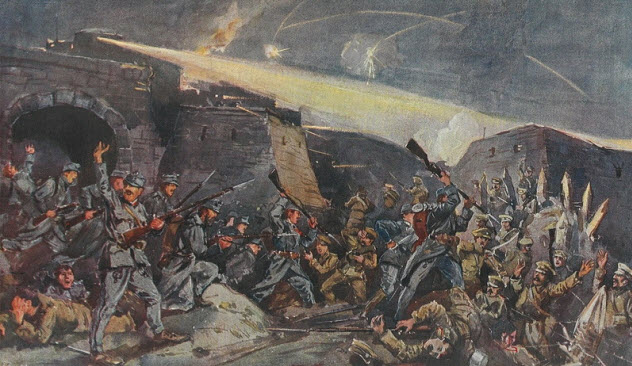
The worst Pyrrhic victory happened to the Allies in World War I. Even though they beat the Germans, the Austro-Hungarians, and the Ottomans, the aftermath of the war left most parties worse off than when they began. Their World War I victory caused at least four major problems for the Allies.
First, there was the Treaty of Versailles, which dictated the punishment for Germany after the war. The harshness of the penalties directly contributed to Hitler’s rise to power—and World War II. Without this treaty, Hitler couldn’t have exploited the suffering of the German people or their enormous resentment toward the French.
Second, the impact of the war on Britain was devastating. Before World War I, Britain was by far the richest country in the world. But they had agreed to financially support nearly all of their allies. In addition, expenditures for weapons, ammunition, food, and horses transferred nearly all of Britain’s wealth across the Atlantic to the US.
Britain lost its position as the world’s greatest superpower during this war, which nearly crippled them financially. During and after the war, independence movements also began. The largest was the Irish independence movement, which succeeded in 1921.
Third, the French suffered hugely because their country was the primary battleground for this conflict. Their economy was shattered after the war. Most of their industrial capabilities were destroyed—with entire regions in ruin. Due to the huge amounts of artillery shells fired, parts of France are still not open because of unexploded shells.
Finally, the Russian tsar was overthrown during the war. The high loss of life and crippling financial impact of the war had ignited a revolution. The Bolsheviks seized power, and communism became entrenched in Russia.
To end their involvement in World War I, the Bolsheviks signed a peace treaty with Germany in which Russia ceded large chunks of land to Germany. In the turmoil that followed, a civil war ensued in Russia.
With Russia weakened, many states—such as Estonia, Finland, Lithuania, Latvia, and Poland—declared independence from Russia. At that time, the communist state could do little to prevent it.
I like history, so I write about it.
